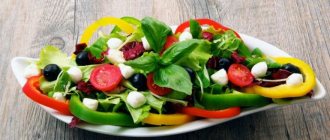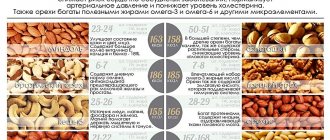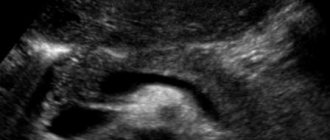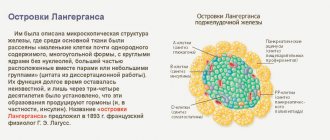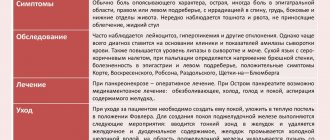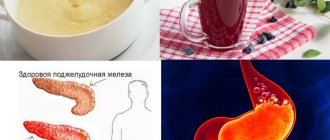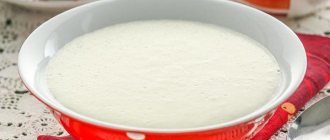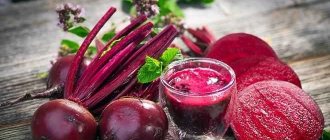Herring for pancreatitis is not a recommended product. Dietary nutrition allows the consumption of sea fish only after the symptoms of exacerbation of pancreatic disease have been relieved. But it should have low fat content. Sea herring does not fall under this indicator, but cod or pollock is a different matter. The patient will be able to enjoy a few pieces of herring only when a stable remission of the disease occurs, that is, when pancreatitis completely recedes. Otherwise, the person will experience attacks of severe pain.
Fish dishes for pancreatitis: benefits and rules for serving fish for the dietary table
Organizing a diet for pancreatitis means carefully thinking through the menu, including only foods that are gentle on the pancreas and healthy for the body, which includes fish. Dishes made from it should be on the table twice a week, but it is important to choose the right variety so that the harm does not outweigh the benefit.
The benefits of eating fish for pancreatitis
The benefits of fish for pancreatitis are due to the following properties of the product:
- enriched with polyunsaturated omega fatty acids, which help ensure proper regulation of metabolism, while simultaneously lowering the level of bad cholesterol in the blood;
- the presence of easily digestible protein compounds with a high content of essential amino acids;
- supplementation of protein components with fat-soluble vitamins A, D, E, the concentration of which is quite high compared to other products;
- an abundance of micro- and macroelements, including iron, phosphorus, iodine and selenium compounds.
In terms of the number of the latter components, marine fish varieties are in the lead.
Important! Only lean (skinny) or moderately fatty fish can be useful for pancreatitis.
For pancreatitis, it is recommended to include low-fat (skinny) fish in the diet.
Nutritional characteristics depending on the variety - table
| Type of fish | Fat content | Calorie content | squirrel | Amount of omega-3 acids |
| River | ||||
| Perch | 1% | 117 kcal | 18.5 g | |
| Pike, burbot, roach Amur | 2% | 92 – 97 kcal | 21.3 g | |
| Rudd, carp | 4% | 97 kcal | 18.2 g | |
| Marine | ||||
| Navaga, pollock, cod, blue whiting, lemonema | 0,3 — 1% | 78 – 81 kcal | 15.9 – 17.8 g | 0.22 g |
| Flounder, mullet, lamprey | 2% | 103 kcal | 18.3 g | 0.56 g |
| Herring, hake, sea bass | 4% | 95 – 115 kcal | 18.2 – 19.9 g | 2.41 g |
| Red varieties | ||||
| Trout, pink salmon | 5 — 7% | 168 kcal | 21 – 22.9 g | 1.06 g |
The glycemic index of fish consumed in its pure form is zero, so such food does not pose a danger to people suffering from diabetes. If fish fillet is used to make cutlets, the indicator important for diabetics increases to 50 units.
How to eat fish correctly for pancreatitis
You can add fish to the menu (only skinny varieties with a fat content of no more than 3%) for pancreatitis after a week has passed from the moment of an acute attack, which was diagnosed for the first time or was the result of an exacerbation of a chronic process. Acceptable cooking mode is steaming. After which the product is ground.
Note! During the first few days of expanding the diet, it is important not only to clean the fish from bones, but also to remove the skin from it.
After another 7 days, they move on to eating fish, boiled or baked in pieces. You can also cook steamed cutlets.
When the month period after the exacerbation has passed, you can diversify the diet with moderately fatty varieties of fish, the fat content of which does not exceed 4 - 5%.
Such products should be on the menu no more than once a week and only in limited quantities, even if remission occurs.
Products compatible with fish
In order for fish dishes to bring only benefits to the body, you need to combine their consumption with vegetables that are allowed for pancreatitis, excluding types that are difficult to digest.
It is recommended to combine fish with cereals for pancreatitis
Cereal porridges are also a good addition, since fish combines harmoniously with grains without causing overload of the digestive tract.
Recommended cooking methods
As noted above, after an exacerbation of pancreatitis, it is necessary to maintain a 30-day diet consuming exclusively fish fillets and only in ground form, preparing steamed cutlets, soufflés, and casseroles from such a product.
As soon as the disease is in remission, they begin to prepare the fish by boiling it or baking it in a whole piece.
As for fish broths and soups made with this broth, they should not be on the menu (with the exception of sauces).
Red fish is rich in protein, but due to its high fat content, it can only be consumed a couple of times a week.
Separately, options for eating red fish, which are extremely rich in protein, should be discussed. These fish carcasses can be baked, stewed or steamed. Due to the approach of the fat content of these varieties to the borderline value, it is important to dose the portions correctly, eating a maximum of 100–200 g of delicious fish a couple of times a week .
Fish diet for children and pregnant women
The menu for such categories of patients focuses mainly on marine fish with minimal fat content, since protein in this situation is extremely important for the child’s body. In addition, sea fish is rich in iodine, and this element is necessary for the proper functioning of the thyroid gland, which is responsible for the production of hormones.
Can fish harm the pancreas?
For pancreatitis, fish with a fat content exceeding 8% is contraindicated. Based on these considerations, it is strictly prohibited for patients with pancreatic pathology to consume fish oil, which forces the suffering organ to work harder. As a result, there is an excess accumulation of fat in the body, which leads to the following symptoms:
- abdominal pain and nausea;
- gagging;
- loose stools, the distinctive feature of which is an oily sheen.
In addition to fatty fish, a ban is imposed on dishes prepared by salting, smoking, and canning, even if skinny varieties are used.
How to select and store fish
The choice is primarily based on the fat content of the fish. It is advisable that the carcass is not frozen, but fresh, with priority to marine species.
Important! If it is not possible to purchase a fresh product, you need to pay attention to the appearance, excluding the purchase of yellowish carcasses and those around which ice is unevenly distributed. Such signs indicate a high probability of secondary freezing, which is unacceptable.
Before cooking, the fish is thoroughly cleaned and washed, the entrails are removed and divided into portions. It is recommended to prepare dishes for one or two times, since long-term storage of finished fish in case of inflammation of the pancreas is unacceptable.
Experts do not advise buying frozen fish, as there is a high risk of running into a low-quality product.
Recipes for the diet table
There are three main options for preparing fish:
- steam cutlets;
- boiled fish;
- baked carcass.
Diet steamed cutlets
To prepare them you will need:
- fish (about 500 g, preferably fillet);
- eggs (2 pieces);
- butter (100 g);
- semolina (3 full spoons);
- onion (1 head).
- The fish, butter and onion are pre-chopped, the semolina is thoroughly mixed with the eggs, after which all components are combined, achieving a uniform minced consistency.
- As soon as the cutlets are formed, they are placed in a double boiler or multicooker, selecting the “steam cooking” mode.
An alternative to this cooking mode is stewing in the oven. - Salt is added on the tip of a knife after the filling is cooked.
Steamed fish cutlets can be cooked both in a slow cooker and in the oven
Boiled fish with Polish sauce
Products you will need:
- cod (about 200 g);
- parsley leaves (no more than 10 g);
- wheat flour (about a teaspoon);
- egg (1 pc.)
- The fish is pre-cleaned, divided into portions and boiled, then using the broth to prepare the sauce.
- Parsley is added to the water during the cooking process.
- The flour is dried in a frying pan and diluted with fish sauce, then boiled for another 5 minutes.
- A hard-boiled, finely chopped egg is added to the broth.
- The resulting sauce is poured over the cod laid out on a plate and served.
Baked fish with sour cream sauce
You need to prepare the following ingredients:
- perch (about 300 g);
- sour cream with a fat content of 15% (no more than a tablespoon);
- wheat flour (one teaspoon);
- carrots (1 pc.);
- parsley root (1 pc.);
- decoction based on vegetables (about 100 g);
- butter (10 g).
- The fish is washed well, cleaned and divided into pieces, after which it is placed in a saucepan, adding chopped parsley root and carrots.
- Pour the ingredients with cold water so that the fish pieces are ¾ covered and simmer the dish over low heat for 10 minutes.
Baked fish in sour cream sauce will please even the most sophisticated gourmet - Then the pieces of fish are placed on a baking sheet, pouring a sauce made from flour, sour cream and butter dried in a frying pan.
- The dish is sent to the oven and baked for 20 minutes.
Fish for pancreatitis allows you to diversify your diet and increase the nutritional value of your daily diet. Such dishes can be prepared if the exacerbation of the disease is over. Therefore, it is still recommended to consult with your doctor first.
Source: https://lechenie-diabet.ru/rybnye-blyuda.html
What fish should you avoid?
You should avoid fatty fish. Last but not least, the method of preparation is important: smoked, fried in oil and deep-fried, dried fish are prohibited. Of course, this does not mean that all this should be completely excluded from your diet, but it can only be eaten during long-term remission, in small quantities.
Unfortunately, all red fish with the exception of pink salmon are also prohibited.
It is worth highlighting pink salmon separately. It contains enzymes that help the pancreas perform its function, but at the same time it contains 7% fat. Therefore, pink salmon for pancreatitis can only be consumed in remission, no more than 2 times a week. Nutritionists advise making broths or meatballs and cutlets from its fillet.
Of course, we can’t help but mention herring. This is a traditional dish on the Russian table. It is rich in semi-saturated acids, protein and amino acids. During the acute period, herring can only be eaten boiled and in small quantities. In the remission stage, you can eat it in salted form, but introduce it into the diet gradually.
You shouldn’t get carried away with herring
Pollock recipes for pancreatitis
Restoring the body after experiencing an inflammatory process in the pancreas always begins with the preparation of a new diet. Following a diet allows you to ease the work of the digestive system, unload the pancreas and reduce the risk of developing a new attack.
How permissible is it to eat fish, and what fish dishes for pancreatitis would be an excellent addition to the diet?
Which seafood should you give preference to and which should you avoid?
When fish oil is consumed by a healthy person, this valuable substance will have the most beneficial effect on the functioning of all body systems: it accelerates metabolic processes, reduces the level of “bad” cholesterol, and improves the condition of the heart muscle and blood vessels. Therefore, patients with pancreatitis try to introduce this product into their diet in order to get the maximum benefit from it.
Unfortunately, during the period of development of pancreatitis, such a valuable and useful component should be used in a limited manner, since it will load the weakened pancreas, which will have a detrimental effect on a person’s well-being. The thing is that the enzymes produced during the digestion process are released in insufficient quantities during the period of remission, and in the acute form, the body purposefully suppresses them.
Therefore, when making such a disappointing diagnosis, it is so important to eat only certain types of fish. The fundamental criterion for choosing it is the fat content - it should not exceed 8%.
At the same time, any introduction of fish dishes, even dietary preparation, at the stage of the acute course of the disease (especially in the first days) is unacceptable, and caution should be exercised when introducing seafood dishes into the diet at the stage of remission.
Fish dishes for acute pancreatitis or at the stage of remission of the pathology, prepared according to dietary principles, are the right decision. In this case, you need to choose certain types of fish:
| Variety | Fat content | Kinds |
| Skinny lean fish | Less than 1% | Marine species include navaga, pollock, haddock and river perch. |
| Skinny low-fat fish | Up to 2% | From the sea - flounder, lamprey and mullet; among river ones - roach, omul, cupid. |
| Low-fat fish | No more than 4% | From sea fish, it is best to choose roach, flounder or cod; from river fish, it is pike, pike perch, tench, and bream. |
| Moderately fatty fish | The indicator varies between 4-8% | So, from sea fish you should choose tuna, herring and pink salmon or bream; from river fish, trout and carp fillets, and catfish are suitable for your diet. |
Consumption of seafood with a high fat content (more than 8%) is prohibited. Otherwise, a person may experience unpleasant symptoms in the form of pain in the abdomen and intestines, nausea and vomiting, as well as diarrhea. In this case, a new attack of pancreatitis is possible.
Rules for preparing fish dishes during the inflammatory process
Fish dishes for pancreatitis must be prepared taking into account certain rules and recommendations. How to cook fish for pancreatitis:
- boil;
- put out;
- bake;
- steam it.
Any fish soup, dumplings, cutlets, casseroles and other dishes must be prepared with a minimum amount of seasonings, salt and spices. It is forbidden to eat smoked, fried, canned, raw, salted fish, as well as fatty caviar.
Homemade soups are boiled in vegetable broth or water and served with portioned pieces of fish, boiled separately in advance, since the diet does not provide for serving rich fish broth. At the same time, you should avoid adding vegetable or sunflower oil to traditional fish dishes.
When cutting fish, large bones, fins and skin are necessarily removed - only fillets are used.
During exacerbation
The introduction of fish dishes is allowed no earlier than 7-10 days from the onset of the attack. At the same time, only lean, non-fat varieties (up to 2%) that are subjected to permitted heat treatment are used for the dietary table.
In the first three doses, the fillet is ground to a puree, then the fillet is divided into small pieces, and after another week - served in the form of a soufflé or cutlets, quenelles. After a month of a strict diet, you can eat whole pieces of fish.
In remission
It should be noted that it is worth introducing a product of fattier varieties only at the moment of stable remission - after a month and a half, when the exacerbation of pancreatitis has subsided.
Compared to meat and chicken, they eat seafood relatively rarely, arranging no more than 1-3 fish days a week and in small quantities, giving preference to less fatty varieties, even during the period of stabilization of well-being.
If after eating such a product you feel weakness, nausea, pain and cramping in the pancreas, colic, then you will have to give up fish for a while, and the next time you eat, reduce the portion by half.
Popular recipes for the diet table
Fish dishes for pancreatitis must be prepared according to special recipes and all dietary principles must be followed.
Fish soup
Is it possible to eat fish soup if you have pancreatitis? Nutritionists allow the use of this soup, because fish pulp contains many vitamin substances and compounds that are valuable for the body. Ingredients:
- fish fillet – 300 gr.;
- potatoes – 2 pcs.;
- carrots and onions – 1 pc.;
- parsley root and bay leaf - 1 pc.
If you use a whole fish carcass, it must be filleted, separating the bones and skin, fins and head. The resulting parts of the pulp are washed in cool water and boiled until fully cooked, after which the entire broth is drained. The finished fish is placed in a separate bowl, and the soup itself is boiled in fresh water or pre-cooked vegetable broth.
Source: https://sarhive.ru/mintaj-recepty-pri-pankreatite/
Why is herring dangerous for acute pancreatitis?
Many patients wonder whether it is possible to eat herring during an exacerbation of pancreatitis? It is worth immediately noting that herring has several varieties that differ in the percentage of fat, among them there are low-fat fish, herring of medium fat content and with a high concentration of fat.
It has been established that the consumption of products with animal fats provokes activation of the secretory functionality of the parenchymal gland. Therefore, after eating one piece of your favorite fish dish during acute pancreatitis, the patient activates an increased level of juice secretion, which significantly aggravates the course of the disease, increasing pain symptoms and other clinical signs of pancreatitis.
It will be possible to eat herring only if the acute stage of the disease is stopped and the patient is in excellent health.
Fish dishes
fish dishes , steamed or boiled, are included in various diets. Fish contains a lot of protein, which is absorbed by the body more easily than meat protein, and low carbohydrates; low-fat fish contains little fat.
Low-fat fish: cod, pike perch, pike, navaga, carp, bream, etc.
Fish dishes that meet the requirements of diet therapy for chronic pancreatitis: quenelles, soufflé, boiled fish, meatballs.
Recipes for fish dishes that you will find on this site:
The transition from diet No. 5p to diet No. 5 is carried out with the permission of the attending physician. The assortment of fish dishes can be supplemented with:
- Baked fish balls with cottage cheese (belip)
- Fish pudding, option 2
- Fish poached in milk
- Fish casserole
- Fish meatballs
Pike perch meatballs
Ingredients:
- Low-fat fish (for example, pike perch) - 120 g
- rice - 15 g
- butter - 5 g
- water - 50 g
Cooking technology:
- Cook the rice into a viscous porridge and cool.
- Add porridge to the pike perch fillet and mince it twice.
- Add 5 g of melted melted butter.
- Beat well, make meatballs and steam.
Fish boiled with Polish sauce
Ingredients:
- Low-fat fish (for example, cod) - 200 g
- parsley -10 g
For the sauce:
- decoction - 100 g
- wheat flour - 10 g (1 tsp)
- egg - 1/2 pcs
Cooking technology:
- Clean the cod, cut it into portions and boil it in salted water with parsley.
- Dry the flour without oil in a frying pan and dilute with fish broth. Boil for 5 minutes
- Place a finely chopped hard-boiled egg into the broth.
- Place the cod on a plate and pour the sauce over it.
Boiled fish meatballs (pollock)
Ingredients:
- pollock, (maybe pike) - 320 g
- egg - 1 piece
- vegetable oil - 20 g (2 tsp)
- bread - 60 g.
Cooking technology:
- We cook the fish - wash it, remove the bones and skin, cut it into pieces and pass it through a meat grinder.
- Add bread soaked in water and mince again
- Add the egg and salt and mix thoroughly.
- We form meatballs weighing 20-25 g from minced meat.
- Cook the meatballs in water.
- Serve fish balls by pouring melted butter over them.
Cod baked in milk sauce
Ingredients:
- cod – 240 g
- milk - 100 g (1/2 cup)
- carrots - 10 g
- vegetable oil - 10 g (1 tsp)
- wheat flour - 10 g (1 tsp)
Cooking technology:
- Prepare the sauce: dry the flour in a frying pan without adding oil. Gradually add hot milk to the flour, add salt and a little vegetable oil (preferably olive oil)
- We wash the fish, cut it into portions and put it in a saucepan.
- Chop the carrots on a coarse grater and add to the fish. Salt.
- Let the fish and carrots simmer in a small amount of water for 10-15 minutes.
- Place on a baking sheet greased with vegetable oil. Fill with sauce. Bake in the oven until done
Fish baked with sour cream sauce
Ingredients:
- Low-fat fish (for example, perch) - 340 g
- sour cream 15% -20 g (1 tbsp)
- wheat flour - 10 g (1 tsp)
- vegetable broth for sauce - 100 g
- oil - 7 g
Cooking technology:
- Wash the perch well, peel and cut into portions. Put it in a saucepan.
- Add roots - carrots and parsley.
- Fill with cold water so that the fish is covered 3/4 with water and simmer for 10 minutes.
- Place the fish on a baking sheet and pour in sour cream sauce. Bake in the oven.
Boiled pike perch
Ingredients:
- Low-fat fish (for example, pike perch) - 100 g
- sour cream, greens and parsley root - 5 g each
Cooking technology:
- Cut the prepared fish into pieces and place in a saucepan. Fill with cold water, bring to a boil and skim off the foam.
- Add greens and parsley root, salt and cook for 10 minutes
Fish dumplings, recipe - read here
Boiled fish dumplings from pike perch, recipe - read here
Fish soup puree, recipe - read here
Source: https://pancr.ru/dieticheskoe-pitanie/blyuda-iz-ryby.html
Recommendations and recipes
Preference is given to fresh fish. Since many varieties are difficult to find fresh on store shelves, you have to purchase a frozen carcass. This method of preserving freshness is acceptable for storage. It is important to ensure that the freezing process is carried out only once. When re-frozen, the beneficial properties are lost, the product takes on a different appearance, and the taste changes.
To avoid buying such a low-quality product, follow some rules:
- The surface of the carcass does not change color. If there is a yellowish coating, feel free to refuse the purchase.
- They prefer dry freezing. With repeated defrosting, the product loses its shape and becomes deformed. When re-freezing, all the drained moisture turns into ice and snow. This will be evidenced by a large number of fish around.
- When re-freezing, the layer of ice lies unevenly.
It is allowed to cook only from fish fillets. Pay special attention to preparation. The carcass is thoroughly washed, scaled, skinned, all bones and entrails are removed, and the fleshy part is separated. This ingredient will become the basis for preparing many dishes.
The most common dish in the diet is preparing lean fish soup for pancreatitis. The prepared fillet is cut into slices, filled with purified water, and boiled in a saucepan. Remove the foam, add potatoes (diced), carrots, onions. Cook everything until tender, at the end add finely chopped greens and add a little salt.
steamed dumplings
Steamed dumplings will be a tender finished product, which is safe to eat if you have pancreatitis.
Tuna for pancreatitis, pollock, cod and other sea fish
Pancreatitis is a pathological disorder of the functionality of the pancreas, which is inflammatory in nature. This process can be acute, or have a chronic form of development with alternating periods of remission with exacerbation of the disease.
In most cases, the disease occurs in people who abuse fatty and spicy foods, alcoholic beverages, as well as with frequent overeating and the development of other pathological processes in the digestive system, such as cholecystitis, cholelithiasis, gastritis, and so on.
The clinical picture of pancreatic pathology and the method of its therapeutic treatment depend on the severity of the disease. Basically, the disease is expressed by the development of severe pain in the epigastric region, copious discharge of vomit, diarrhea, gas formation, bloating and dizziness.
The basis of therapy is taking combination medications with a strict diet that excludes all types of foods that have a negative effect on the affected pancreas.
All varieties of fatty, salty, spicy and smoked dishes are strictly prohibited, but what about eating sea fish? Is it possible or not to eat it with this pathology? We'll find out in this review.
What kind of sea fish can you eat if you have pancreatitis?
Many varieties of seafood, including fish, are included in the diet, as are dairy, fermented milk and meat products.
It has been established that fish is rich in beneficial omega acids, which normalize metabolic processes in the body and reduce the level of bad cholesterol.
Moreover, fish is a complete source of easily digestible protein and selenium, which activates the body’s defense against the negative influence of external environmental factors.
With the development of pancreatic pathology, patients are recommended to eat fish with a low fat content, not exceeding 0.9%.
When stable remission of pancreatic disease is established, patients are allowed to consume sea fish with an average moderate fat content of up to 6.4.
It is recommended to cook fish by steaming, in the form of cutlets, by boiling, or baking, but under no circumstances should you use fish to prepare fish soup and other types of soups.
Smoked and salted fish canned in its own juice, or in tomato, is strictly prohibited.
Useful properties of sea fish
The benefits of sea fish lie primarily in the high concentration of easily digestible protein compounds containing essential amino acids. As a percentage, sea fish, depending on its variety, can contain up to 26% of easily digestible proteins, while river fish contains only up to 20%.
Moreover, the beneficial effect of sea fish lies in the content of the following useful components:
- vitamin complex, which includes vitamins A, E, F, D,
- amino acids in the form of lysine, tryptophan, methionine,
- as well as microelements in the form of iodine and phosphorus, zinc and magnesium, fluorine and bromine, iron and copper, boron, calcium and so on.
Almost all varieties of sea fish are considered dietary products, the calorie content of which does not exceed 99 kcal per 100 grams of product. Therefore, there is no need to doubt whether it is possible to eat sea fish with pancreatitis.
Eating sea fish provides:
- normalization of the functioning of the entire digestive system,
- improving the functioning of the thyroid gland against the background of a high concentration of iodine molecules,
- reducing the intensity of development of the inflammatory process in the pancreas,
- stabilization of cholesterol levels,
- restoration of the cardiovascular system and prevention of heart attack and stroke,
- increased brain activity
- improving the quality of vision.
Moreover, eating sea fish will help you shed those extra pounds, as it is a low-calorie product with high nutritional value.
Choosing fish when sick
It is important to remember that with the development of pancreatic pathology, even fish oil, which has a multifaceted range of beneficial properties, has a negative effect on the affected cells of the parenchymal organ, overloading them. Therefore, in case of pancreatic damage to the pancreas, it is recommended to consume moderately fatty and low-fat varieties of fish containing less than 7% fat.
Low-fat varieties
Low-fat, most popular varieties include cod and pollock.
Eating cod for chronic pancreatitis is recommended for all patients, as it is a light dietary product enriched with a wide range of useful components.
Moreover, various dishes with a creamy consistency can be prepared from cod, which is very important for patients with pancreatic disease, especially after an exacerbation. Cod has a pronounced pleasant taste.
Cod liver is also used to prepare delicious dietary dishes.
Pollock for pancreatitis is also one of the recommended and fairly affordable varieties of low-fat fish. It contains many nutritional and beneficial components in the form of easily digestible protein, amino acids, phosphorus, potassium, iodine and PP vitamins. This fish has a less pronounced taste than cod, but no less pleasant.
And also from the great variety of sea fish, in case of pancreatitis you should opt for the following low-fat types:
- navaga and haddock,
- Arctic cod,
- mullet and whiting,
- pollock,
- roach and flounder,
- a silvery variety of hake.
The percentage of fat content of the presented marine inhabitants does not exceed 1%.
Moderately fatty varieties
Moderately fatty dietary fish with a fat content of less than 8% include tuna, which is ideal for cooking in the oven for pancreatitis. Catfish for pancreatitis can also be used for baking. In addition, such representatives of marine life include:
- chum salmon,
- pink salmon,
- horse mackerel,
- trout,
- low-fat varieties of herring and herring.
It is also worth noting that sea bass contains no more than 4% fat, so it can be consumed for pancreatic disease.
Some dietary recipes from sea fish
One of the most popular dishes recommended for pancreatitis are steamed cutlets, the recipe for which is quite simple. Ingredients you will need:
- half a kilogram of sea fish fillet from low-fat varieties, pollock is suitable,
- two chicken eggs,
- one hundred grams of butter,
- a few tablespoons of semolina,
- one head of onion,
- a little salt.
Place the pollock fillet, oil and onion in a blender bowl and thoroughly grind into minced meat. Mix semolina with eggs and add to minced meat. Add salt and mix everything thoroughly until a homogeneous consistency is obtained. Then form cutlets of your favorite shape and cook in a double boiler or bake in the oven. These cutlets can be cooked up to three times a week.
Baked cod with bread crumbs will decorate any table. To prepare it you will need:
- half a kilogram of fillet,
- onion head,
- one carrot,
- two tomatoes,
- dill and parsley,
- 50 grams of hard cheese,
- a piece of stale bread
- a tablespoon of oil,
- salt.
Grease the baking dish with oil. Place onion cut into rings on the first layer, and grated carrots on it. Then cut the cod fillet into small pieces and divide into a couple of equal parts.
Place one part on top of the carrots, then chopped tomatoes and the rest of the cod as the top layer. Cover the fish with a thick layer of a mixture of grated cheese and chopped herbs, and sprinkle bread crumbs on top.
Sprinkle the whole thing with a little oil and bake in the oven until golden brown.
Bibliography
- Fish for our table. M. Polymya 2013
- Fish on your table. M. Arkaim (Ural LTD) 2012
- Serova I. Fish and seafood. M. Profizdat 2012
- Sladkova Z. Dishes from seafood and fish. M. Phoenix 2015
- Compiled by Kaganov B. S., Sharafetdinov Kh. . Practical guide (normative document). M. 2009, 2010
Source: https://mfarma.ru/pankreatin/razreshennye-pri-pankreatite-vidy-morskoj-ryby
What kind of fish can you eat for pancreatitis: doctors’ recommendations
A disease of the pancreas changes the usual lifestyle of a previously healthy person.
You have to give up a number of familiar foods, sweets and drinks, and change the way you prepare many dishes. A delicious fatty, fried, peppered, salty product goes into oblivion. In case of primary signs of the disease and with proper treatment, you can try to gradually return to your usual diet.
Just don’t go overboard with treats and don’t overeat.
Eating fish and seafood becomes part of a healthy diet, along with dairy, fermented milk and meat products. As you know, omega acids, which fish and fish oil are rich in, normalize and reduce cholesterol levels. There is a natural regulation of metabolism in cells.
Fish is a product enriched with protein, a valuable, easily digestible element. Seafood contains selenium, which prevents the influence of harmful environmental factors.
Fish oil is indispensable for the body. It is much easier to digest than animal fats. Patients with pancreatitis with the specified type of products need to be selective. Is fish allowed for pancreatitis? A partial answer is presented taking into account medical recommendations.
According to medical practice, low-fat varieties of fish are considered acceptable for food for a patient.
The selected varieties of fish for pancreatitis should show a fat content of 0.3-0.9 percent. Selected species of fish are included in the dietary list.
Marine:
- cod;
- haddock;
- navaga;
- polar cod;
- whiting;
- pollock;
- mullet;
- pollock;
- flounder;
- silver hake;
- vobla.
River:
The species described below exhibit moderate fat content in sizes of 4.2 - 6.4 percent. It is not forbidden to cook the specified fish for pancreatitis.
Marine:
- tuna;
- chum salmon;
- horse mackerel;
- catfish;
- pink salmon;
- trout;
- herring;
- lean herring.
River:
- carp;
- catfish;
- crucian carp;
- bream;
- perch.
Fish oil that is absent from the body or present in small quantities does not at all make a seafood product of little use. The amino acids contained in fish are important for the body.
When preparing seafood, give preference to the boiled type, steamed cutlets, and steamed food.
A categorical “no” – smoked, canned, fried fish. Fish soup is contraindicated.
Fish gold - the strictest taboo
Caviar is a delicacy, preferred by many gourmets, a storehouse of vitamins A, B, D, E and microelements, valuable proteins, light fats, and polyunsaturated fatty acids.
Caviar is recommended for young children and patients recovering to quickly replenish lost minerals, iron and lecithin - a complex of phospholipids that promote the proper functioning of brain cells and the body.
The product characteristics are the highest. The rich composition seems to have no contraindications for use. However, red caviar for pancreatitis is taboo. Doctors categorically prohibit consumption on days of exacerbation of pancreatic disease.
The significant content of table salt and cholesterol in the ready-to-eat product places red caviar in the rank of risk group products. Eating a delicacy provokes stress for the body in chronic forms of the disease and will aggravate the patient’s condition, with unpredictable consequences.
During long-term remission, doctors allow you to eat no more than a gram of the delicacy to satisfy an extreme need. Eating red caviar is only allowed on a full stomach. It is also necessary to take into account the quality of the product and non-handicraft production.
High-quality caviar has a number of obvious differences: a dense consistency, the color is pale pink to deep red, the eggs scatter and do not stick together. If unusual symptoms are felt after eating caviar, it is recommended to immediately take the prescribed drug or consult a doctor.
Herring for pancreatitis: pros and cons
When setting the table for the holidays, each housewife sets out a row of pickles. The central place here is occupied by fish of different species. What do doctors say about eating herring?
Salted fish has a beneficial effect on a healthy body. Thanks to fish, the daily protein intake required for the human body is replenished. Compared to meat, it is digested faster and easier, without causing heaviness in the stomach, does not add extra pounds, and helps cleanse blood vessels. Herring is a product that does not cause flatulence in the stomach.
Doctors say that herring contains many acids that help restore and heal tissue. The pathogenic processes of growth of pathogenic microflora are inhibited.
We are talking about cancer cells, the localization of which leads to the development of cancer.
Methionine, present in some types of fish and completely absent in meat, is an essential amino acid involved in remethylation processes.
Thanks to the easy digestibility of fish protein, the development of inflammation in the tissues of the pancreas is prevented, and digestion in general is improved. Establishing metabolic processes helps regulate excess weight.
Despite the number of advantages of eating herring, remember that you need to know when to stop. It is extremely necessary to take into account contraindications from doctors, carefully approach the use of the product and refuse during the phase of exacerbation of pancreatitis.
During the period of stable remission, start eating fresh herring, mainly boiled, in small doses. Low-fat fish is an excellent meat substitute.
Is it possible to have pink salmon?
For various disorders of the digestive system and gastrointestinal tract disorders, for inflammation of the pancreas, the use of pink salmon is allowed. The amount of nutrients it contains improves the functioning of the body.
Among the beneficial properties of pink salmon is the presence of omega-3 acids and nicotinic acid. Speaking about the first, we mean the normalization of cholesterol, the second provides a beneficial effect on the functioning of the gastrointestinal tract and duodenum. Amino acids of this group have an antioxidant effect on the structure of DNA. This is the hidden elixir of youth for the body's cells.
Cook tasty and healthy
Along with pink salmon, every patient has the right to afford dishes prepared from trout. Consider the method of preparing the product - no smoking, pickling or dried products. Exclusively boil, stew and bake. Doctors recommend eating up to 200 grams at a time.
Check out the recipe for making cutlets from the delicacy. For 500 grams of low-fat fish fillet, take two chicken eggs, a couple of spoons of semolina, an onion, 20 grams of butter, a pinch of salt (we control it and do not abuse it).
Cutlets from cooked minced meat can be baked or steamed. You should pamper yourself with this dish twice a week.
Finally, we present the daily diet according to the recommendations of doctors for people suffering from pancreatitis. For breakfast, soft mashed potatoes, a slice of bread with meat pate are acceptable.
For lunch - creamy soup, steamed fish with zucchini, compote and a slice of bread. For dinner – steamed cutlet, oatmeal, carrot puree, light tea.
For snacks, you are allowed to treat yourself to jelly, steamed egg white omelet, and drink half a cup of skim milk.
Strict adherence to the main factors: diet, diet, physical activity, drug treatment will allow you to overcome the disease and get closer to your usual lifestyle. There is no self-medication; such options do not work with inflammation of the pancreas. Keep this in mind, and life will be a pleasure, and the dinner table will be filled with tasty and healthy food.
Source: https://GastroTract.ru/bolezn/pankcreatit/kakuyu-rybu-mozhno-pri-pankreatite.html
Fish dishes for pancreatitis: how to cook, recipes, allowed types of fish
Restoring the body after experiencing an inflammatory process in the pancreas always begins with the preparation of a new diet. Following a diet allows you to ease the work of the digestive system, unload the pancreas and reduce the risk of developing a new attack.
How permissible is it to eat fish, and what fish dishes for pancreatitis would be an excellent addition to the diet?
Fish cutlets
Ingredients:
- fish fillet – 500 grams;
- chicken eggs - 3 whites;
- 50 gr. butter;
- 2-3 tbsp flour;
- 1 head of onion.
Grind the fish and drained oil, as well as the peeled onion, with a blender, add whipped egg whites with a pinch of salt and knead the minced meat until smooth, add flour and mix again.
Roll the prepared minced meat into cutlet balls with wet hands and boil them in a double boiler or in the appropriate mode in a multicooker. As an option, you can cook them in the oven by baking at 180 degrees for 35 minutes, but it is recommended to add a small amount of water to the dish.
Boiled fillet with sauce
The dish is allowed to be consumed by persons with stable remission of pancreatitis and no negative reaction to seafood and eggs. Ingredients:
- lean fish - 250 gr. fillet;
- parsley - about 10 gr. fresh leaves or 5 gr. chopped rhizome;
- 1 tbsp. wheat or rice flour;
- chicken egg – 1 pc.
First of all, the fillet is cut into small portions, rinsed thoroughly and boiled in a small amount of boiling water until fully cooked. During cooking, add parsley to the water (only greens or roots).
In a heated frying pan (without oil), fry the flour until caramel color and add 100 ml. first fish broth, let it boil for 2-4 minutes. Next, add a pre-cooked and finely chopped chicken egg to the mixture. The fish is placed on a plate, and the sparkling is poured with the prepared sauce and served with a side dish.
Meatball soup
Ingredients:
- fish fillet -150 gr.;
- rice – 1 tbsp. spoon;
- potatoes – 2 pcs.;
- onion, carrot – 1 pc.;
- butter - a small piece.
At the very beginning, the rice is boiled until half cooked (the cereal should crunch slightly on the teeth). Separately, make minced fish: beat the fillet with a piece of butter in a blender until smooth.
Place a pan of water on the fire and, after boiling, add diced potatoes, grated carrots and chopped onions.
The minced meat is mixed with rice and rolled into small balls. Place the meatballs one at a time into the boiling broth 7-10 minutes before the vegetables are ready.
Carrot-fish cutlets
Ingredients:
- fish fillet – 200 grams;
- carrots – 2 pcs.;
- chicken egg – 1 pc.;
- a slice of white bread (70 grams);
- onion head;
- milk – 100-150 ml;
- a piece of butter;
- a pinch of salt.
Peeled carrots are boiled until fully cooked, chopped onions are simmered in a small amount of liquid and with a piece of butter until softened. The bread is soaked in milk.
Fish fillet, vegetables and bread are passed through a meat grinder (can be passed twice for greater softness), an egg lightly beaten with salt is added and mixed. I form cutlets from the mixture and steam them for 15-20 minutes.
Fish pate
Ingredients:
- fish fillet – 400 grams;
- carrots – 2 pcs.;
- low-fat cottage cheese – 3 tablespoons;
- a pinch of salt.
Rinse the fish and boil in boiling water until fully cooked, then pass through a meat grinder with a fine grid. The prepared minced meat is simmered over low heat for 2-3 minutes. Separately, boil the washed carrots until tender, peel them and grate them on the finest grater or pass them through a meat grinder.
Mix the vegetable and warm fish mixture, add cottage cheese and add salt. It is recommended to beat the pate with a blender and serve with herbs.
Forshmak
Ingredients:
- herring fillet – no more than 100 grams;
- potatoes 1-2 pcs.;
- butter – 40 grams;
- chicken egg – 1 pc.;
- milk – 40-50 ml;
- fresh greens.
To prepare dietary mincemeat, it is recommended to take low-fat herring, which is pre-soaked in clean water.
The prepared fish fillet is passed through a meat grinder. The potatoes are peeled, boiled until tender and mashed with hot milk. In a separate bowl, mix softened butter, minced fish and mashed potatoes until smooth.
Forshmak is placed in a mold and sprinkled with chopped boiled eggs and herbs.
Potato casserole
Ingredients:
- fish fillet – 150 grams;
- potatoes – 2 pcs.;
- butter – 1 tsp;
- milk – 50 ml;
- flour – 1 tbsp;
- a pinch of salt.
To prepare the sauce, lightly fry the flour in a dry frying pan until slightly yellowish, then pour in warm milk in a thin stream and stir thoroughly. Continue cooking the mixture until it becomes thick and creamy. Turn off the heat and add oil.
Cut the fish into portions, lightly salt it and place on a baking sheet. Place potatoes, pre-boiled and cut into slices, on top. Everything is poured with the prepared sauce and baked in the oven at 180 degrees for 20 minutes. A fish and potato dish is served sprinkled with fresh dill.


